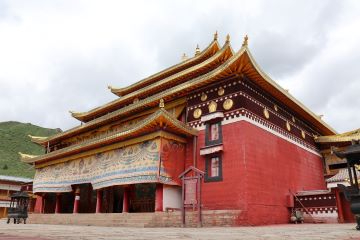the Front Gate of Qingyang Temple
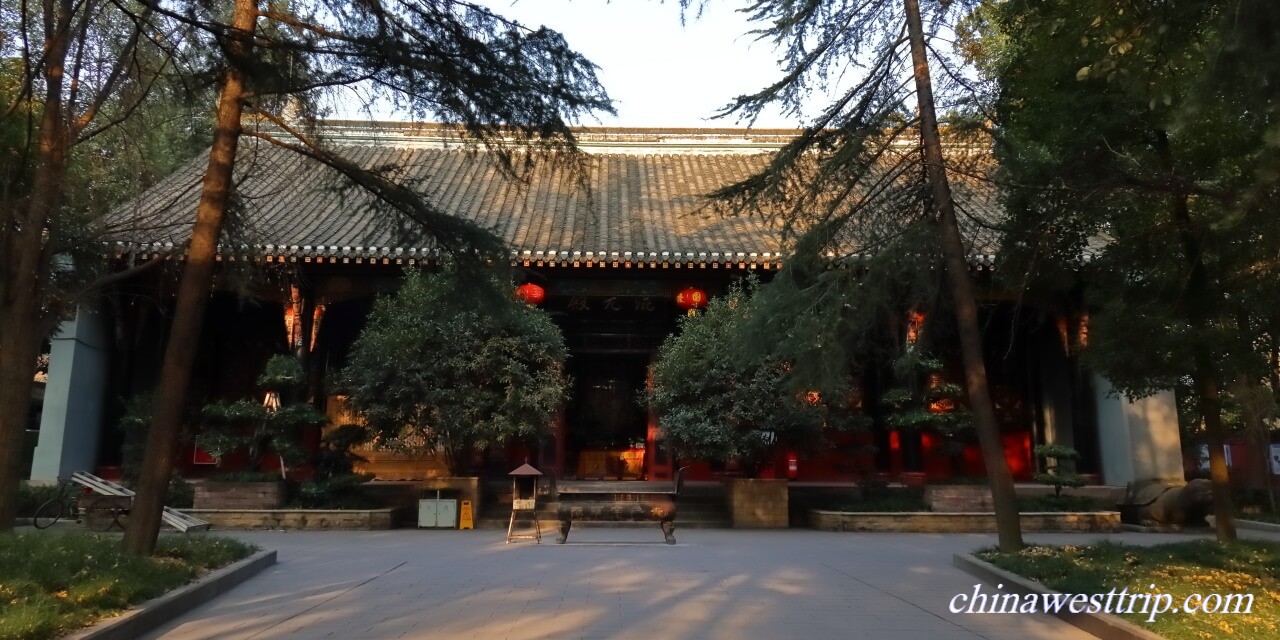
Name in Chinese: 青羊宫 Qīng Yáng Gōng [tʃin jæŋ gɔ:n]
Duration of Tour: One Hour
Location: No.9, the No.2 Section of the First Ring Road West, Qingyang District, Chengdu, Sichuan Province
Highlights: Exploration on China’s Native Religion Taoism and Traditional Architectural Practice
Must-see Sightseeing Spots: Lingzu Hall, Hunyuan Hall, Bagua Pavilion, Sanqing’s Hall, Doumu’s Hall, the Re-birthplace of Lao Tzu and the Lecture Platform
Reputations: No.1 Taoist Temple in Western Sichuan, One of the Most Famous Taoist Temples in China, A Provincial Key Historical and Cultural Relic Site under Protection
Qingyang Temple was originally built in the Zhou Dynasty(1046B.C.---256B.C.). It is supposed to be the place where Laozi was reborn. Ancient Sichuan people held temple fair to celebrate the birthday of Laozi. People named it as Qingyang Fair. Qingyang means green ram. Huangchao rebellion broke out in 881. During the chaos, Emperor Xizong of Tang took refuge in Chengdu, and stayed in the temple. The emperor renamed it as Qingyang Palace Temple. The present buildings could be dated back to 1667 during Emperor Kangxi’s reign of the Qing Dynasty. It is topped as the No.1 Taoist Temple in Western Sichuan.
The temple is one of the top five famous historical sites in Chengdu. It covers an area of 12 hectares(29.6 acres). It consists of eight main buildings, namely Lingzu Hall, Hunyuan Hall, Bagua Pavilion, Sanqing’s Hall, Doumu’s Hall, the Tang Emperor’s Hall, the Re-birthplace of Lao Tzu and the Lecture Platform.
Lingzu’s Hall
The image placed in Lingzu’s Hall for worship is Wang Lingguan. He serves as the chief guardian in Taoism, the god of fire, the god of thunder, as well as the god of justice. Wang Lingguan lived in the Northern Song Dynasty(960---1127).
There is a wooden board behind Lingzu’s Hall. A pattern is painted on the board. The pattern is called Tai Chi. Tai Chi means Yin-Yang or opposites. Taoists believe that all things in the world turn to their opposites when they develop to reach the extremity. It shows what Tao is. Tao is just the balance between the opposites. The opposites exist in all the things. The opposites within a thing do not remain unchanged. It is an invariable law in things that if any movement goes to its extremity of development, it necessarily has to execute a return.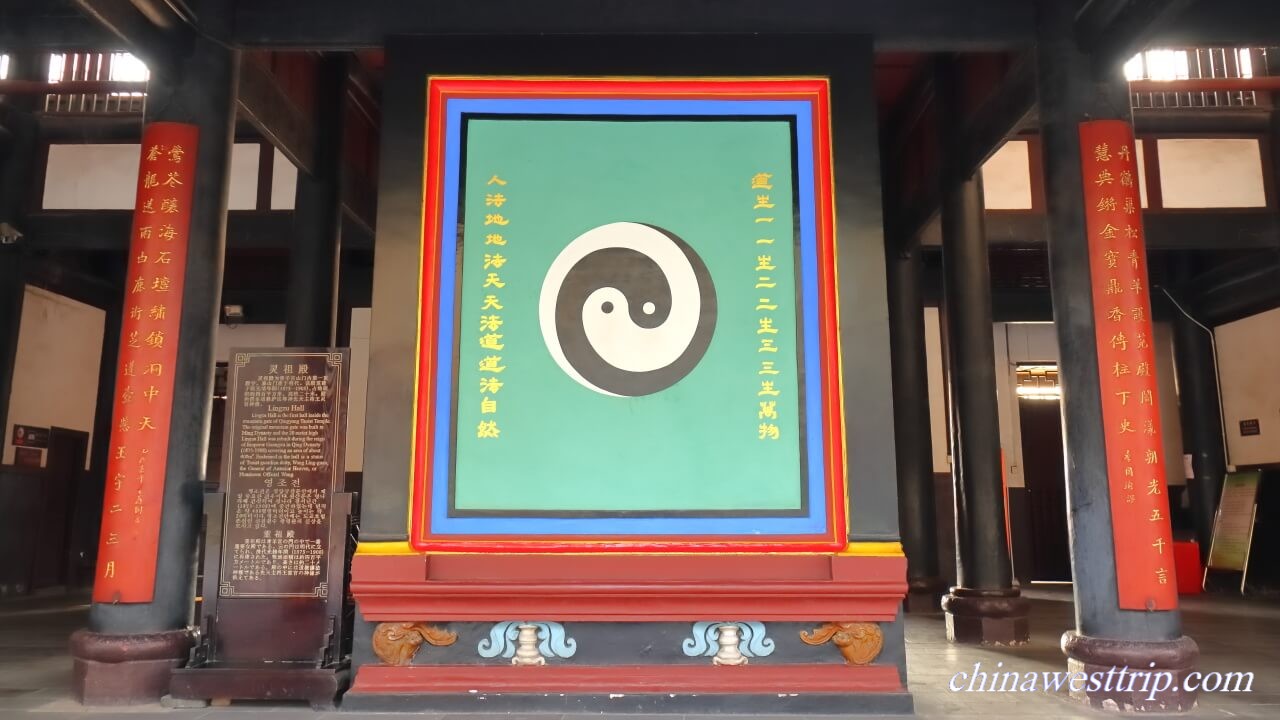
Hunyuan Hall
Hunyuan Hall is devoted to Lao Tzu. Lao Tzu lived in the Zhou Dynasty. He was born in 571B.C, and passed away in 471B.C.. He was the founder of Taoism which was a specific school of philosophy. Lao Tzu was granted with a title by Emperor Zhenzong of Song Dynasty as Emperor Hun Yuan. He was also chosen to be the chief god in Taoism as a religion. Hunyuan means the sky and the earth, or the time before the sky and the earth came into being.
Bagua Pavilion
Bagua means eight trigrams. The eight trigrams are symbols used in Taoist cosmology to represent the fundamental principles of reality, seen as a range of eight interrelated concepts. Each consists of three lines, broken or unbroken, respectively representing Yin or Yang. The eight trigrams are related to Tai Chi and Five Elements philosophy. Referred as hexagrams, the Sixty-four pairwise permutations of trigrams were compiled into the Book of Changes or I-ching by King Wen.
The pavilion is 20 meters(66 feet) in height and 17 meters(56 feet) in diagonal. It contains eight pillars carved with 81 dragon patterns.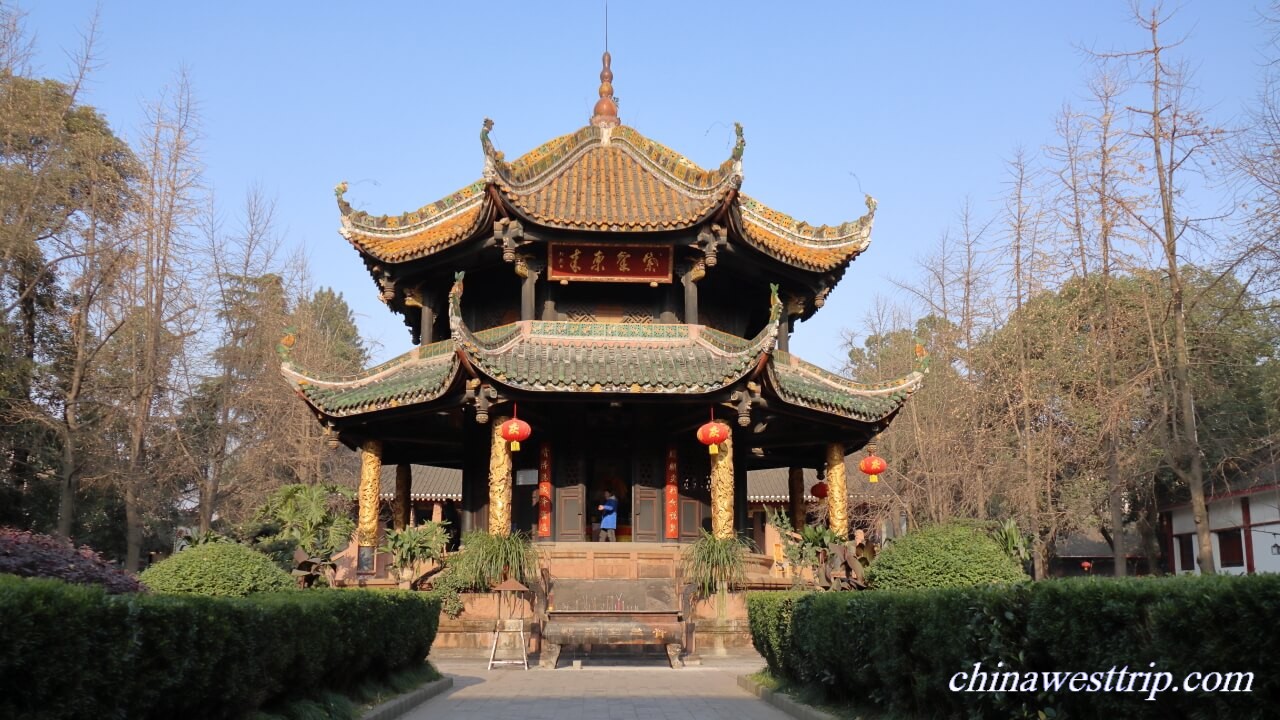
Bronze Rams
There are two bronze sculptures of rams in front of Sanqing’s Hall. One is uni-horned and the other one is bi-horned. The uni-horned is called green ram. It was placed in Qingyang Temple in 1723 by Zhang Penghe. Zhang Penghe used to be the Minister of Personnel of Qing government. The ram is different from common ones. It is cast with rat’s ears, a cattle’s nose, tiger’s claws, a rabbit’s back, a dragon’s horn, a snake’s tail, a horse’s mouth, a goat’s beard, a monkey’s neck, rooster’s eyes, a dog’s belly, and pigs hips. The bi-horned ram was cast in 1829 offered by a local Taoist follower.
Sanqing’s Hall
Sanqing’s Hall is devoted to the top three gods of Taoism. Taoists call them the three gods of purity, namely Yuqing, Shangqing and Taiqing. They are regarded as the three pure manifestations of Tao and the origin of all sensitive beings. Taiqing refers to Lao Tsu.
Doumu’s Hall
Doumu is a goddess in Taoism. She is regarded as the mother of the Jade Emperor, the God of the North Star, and the God ofthe Plough (the Big Dipper).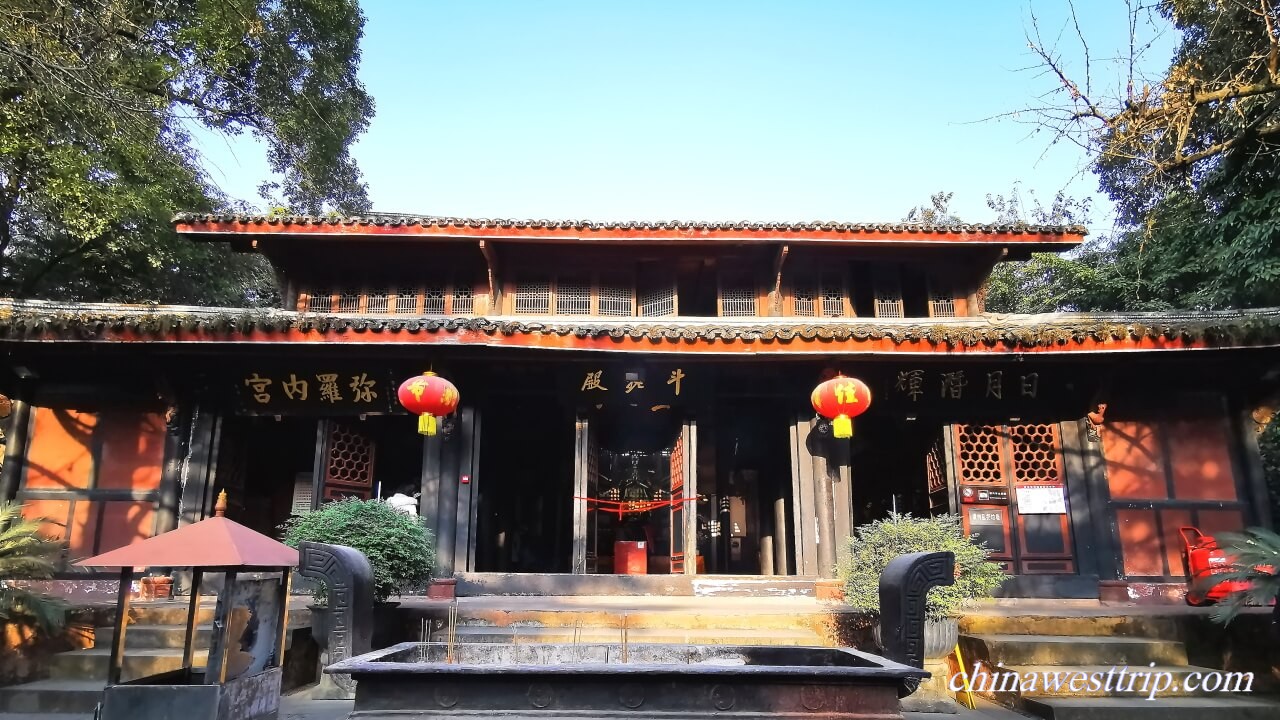
Tang Emperor’s Hall
The building is devoted to the emperors of Tang Dynasty. The statue of Li Yuan, the founding emperor is placed in the middle, accompanied with his wife and his son.
Opening Hours:
8:00a.m.---6:00p.m.
Related Articles:
Chengdu Travel Guide
A Brief Introduction of Taoism
Author: Tina Luo
Update:
